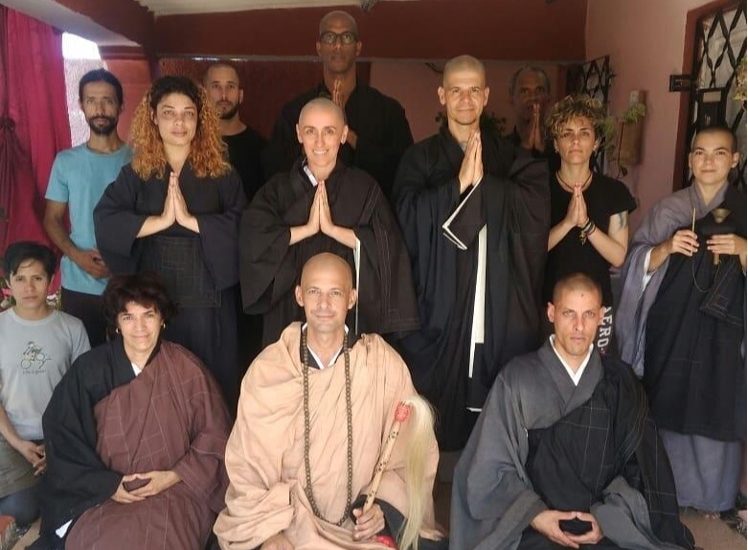One of the fastest-growing schools of Buddhism in Cuba is that of Japanese Zen, which has enjoyed a long and rich history in Latin America. It found roots in other countries earlier, most famously Brazil thanks to waves of immigration by Japanese people since the early 20th Century. However, thanks to a visionary pair of Buddhist leaders – Bárbara Kosen (Spain) and Michel Tai Hei (Cuba) – the Zen diffusion is already happening and will only expand. Rev. Kosen is a lineage heir to the Soto Zen lineage. She became a successor to the lineage in 1993 and is the founder of the Asociación Zen Taisen Deshimaru in Spain. Rev. Tai Hei began his spiritual practice in 1999 and received the Dharma transmission of shiho in 2018.
According to the two Zen teachers: “The center will grant us the opportunity to welcome people and masters from everywhere and from different schools. It will be a center for community, of intensive practice of zazen, and a space to celebrate sesshins or retreats. So far, the Cuban sangha has been limited in its ability to welcome people interested in sharing this period of intensive practice because we are rather itinerant. Our retreats are carried out in rented estates or in spaces that we use for a short period of time. The Zen Center will be the site of our retreats and the physical place that will house the dojo of Matanzas.”
Dr. Douglas Calvo Gainza’s article, Zen en la “Atenas de Cuba”. Promesa y semilla covers this project of the Zen Center of Cuba, which was originally launched in the Cuban city of Matanzas. Like the capital of Havana, it is also rich in heritage locations and iconic locations of natural beauty. However, I have received an update from Dr. Daniel Millet, who edits BDE, that the project is moving to Havana, hence the “Athens of Cuba” – accorded to Matanzas – will no longer be host to the Zen Center. Nevertheless, BDE will continue to cover developments of this ground-breaking initiative, and many other components remain relevant. The English-language translation of the original article is available on BDG, titled: Zen in the “Athens of Cuba”.
I highlighted in an earlier post that Dr. Gainza and Dr. Daniel Millet, will soon launch a 5-part series called “Albores.” Albores means dawn, and this series charts the dawn of the Mahayana traditions in Cuba and will cover a quintet of broad themes. They are:
- Origins,
- The Mahayana in Cuba,
- Buddhism’s influence on art,
- Buddhism’s influence on literature and philosophy, and:
- The present situation of Buddhist Studies and Cuban scholars.
This series hopes to tell the story of a true “dawn” for Buddhism that will endure in a country still impoverished by years of economic isolation and sanctions and social problems. The Buddha’s light has reached into Latin America and other Hispanophone regions for several decades now. However, a lack of resources, a smaller knowledge base, and indeed, weaker awareness about contemporary developments means that places like Cuba – and many other countries we will cover in the future, such as Paraguay, Mexico, Chile, and so on – do not grab the global attention of Buddhists as easily. This is the literature and knowledge gap that BDE seeks to fill. Our online journal and website aims to serve as the bridge between a new and embryonic diffusion (sasana) relative to the Anglophone “West,” revealing a startlingly rich and complex world of fellow Buddhists working hard to serve the Dharma like the rest of us.


